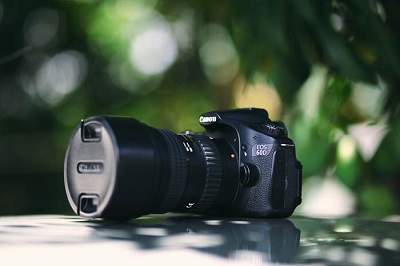Home »
Full Forms »
Technology Full Forms
What is the full form of DSLR?
Full form of DSLR: Here, we are going to learn about the DSLR, full form of DSLR, overview, components of DSLR Camera, working of DSLR, advantages and disadvantages.
By Anushree Goswami Last updated : March 30, 2024
DSLR Digital Single-Lens Reflex
DSLR is an abbreviation of digital single-lens reflex. It alludes to a digital camera which with the sensor of digital imaging merges optics and mechanism of single-lens reflex camera. In the easier description, it is a digital single-lens camera that utilizes a mirror to conduct the light from the lens to the viewfinder. The viewfinder is used to preview the image before the user capture it, which is a hole, reclines on the back of the camera. Replaceable lenses are in-built in DSLR cameras. It allows a user to interchange lenses to get distinct views of any scene.
During the 2000s, DSLRs highly replaced film-based SLRs, and in the early 2010s, regardless of the rising acceptance of mirror less system cameras, DSLRs persists the most general type of interchangeable lens camera in use.
Willard S. Boyle and George E. Smith developed the first successful imaging technology using a digital sensor in 1969. In 2009, Boyle and Smith were awarded the Nobel Prize for Physics for their contribution to digital photography.
In 1975, Steven Sasson the Kodak engineer developed the first digital still camera, which used a Fairchild 100×100 pixel Charge-Coupled Device.

Image source: https://expertphotography.com/what-does-dslr-stand-for/
Components of DSLR Camera
Following are the main components of a DSLR camera,
- Lens
- Reflex mirror
- Shutter
- Image sensor
- Matte focusing screen
- Condenser Lens
- Pentaprism
- Eyepiece/Viewfinder
Working of DSLR
- Through a medium of lens, light enters the camera and collides with the reflex mirror.
- The reflex mirror throws back the light to the focusing screen in the vertically upward direction.
- The passing of light happens through focusing screen and it enters the block of a glass which is a Pentaprism.
- Pentaprism directs the light towards different direction through two discrete mirrors then redirects it towards viewfinder.
- The viewfinder provides a user the live preview of the image.
- The reflex mirror overturns upward and obstructs the vertical path of light to keep it directed towards image sensor, when a user clicks the button to take an image.
- The light reaches the image sensor, when the shutter opens up.
Advantages of DSLR
- Speed and picture Quality will be good
- Interchangeable lenses
- Optical Viewfinder
- Large ISO range
- Easy editing and low noise
- Faster focusing and high quality in low light
- Ability to use filters
- Dust removal system
Disadvantages of DSLR
- Size is large and weight is heavy
- Strenuous in accomplishing simple tasks
- Hard to carry during shoot
- Complicated in settings
- Cost is higher
Advertisement
Advertisement